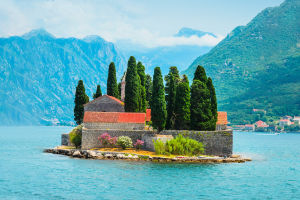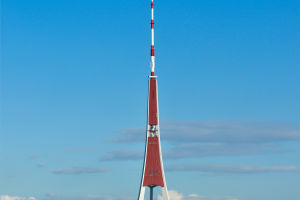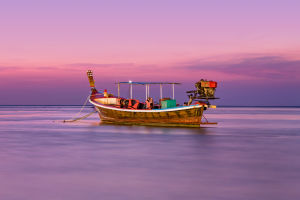Located along the serene coastline of Karnataka, the Kapu Lighthouse stands tall as a historical landmark and a silent witness to the maritime history of the region.
Perched near the small town of Kapu (also spelled Kaup) in the Udupi district, this lighthouse offers not just scenic beauty but also a fascinating history that dates back over a century.
Before the construction of the Kapu Lighthouse, the coastal region of Karnataka was an important hub for trading and fishing activities. The Arabian Sea, with its unpredictable weather patterns, presented constant challenges to mariners navigating the waters.
Ships carrying goods like spices, textiles, and timber often sailed along this coast, but the absence of reliable navigational aids led to frequent shipwrecks. To address these challenges and ensure safer passage for vessels, authorities saw the need to build lighthouses along the Indian coastline.
The stretch of coast near Kapu, with its rocky outcrops and unpredictable currents, was particularly treacherous, prompting the decision to construct a lighthouse in the area.
The Kapu Lighthouse was constructed in the year 1901 during British rule. Built on a massive granite rock formation, the lighthouse reaches a height of 27.12 meters (about 89 feet). The structure was designed to withstand the harsh coastal climate and the powerful sea winds, which it continues to do to this day.
The lighthouse was equipped with a modern lighting system for that period, featuring a kerosene lamp with Fresnel lenses that could cast a powerful beam of light to guide ships safely to shore. The Kapu Lighthouse is a cylindrical tower made of stone and concrete.
The design is a fine example of engineering, blending functionality with durability. Visitors today can climb a spiral staircase inside the tower that leads to a viewing deck, offering panoramic views of the Arabian Sea and the lush green surroundings.
The light system has evolved over time, keeping up with advancements in technology. Originally lit by kerosene, it was later upgraded to electric lamps. Today, the lighthouse is fully automated and uses a powerful electric beacon with a range of about 24 nautical miles (approximately 44 kilometers).
For over a century, the Kapu Lighthouse has played a crucial role in ensuring the safety of seafarers along Karnataka's coast. Its beam continues to serve as a guiding light for fishing boats, cargo ships, and other vessels navigating the waters of the Arabian Sea.
Though modern navigation systems have reduced the dependency on lighthouses, the Kapu Lighthouse remains an essential part of the maritime infrastructure. Today, the Kapu Lighthouse is a popular tourist destination, attracting visitors with its historical significance, breathtaking coastal views, and serene environment.
The lighthouse stands amid a landscape of sandy beaches, rocky cliffs, and swaying palm trees. Sunsets from the top of the lighthouse are particularly stunning, offering visitors a memorable experience. The site also holds cultural importance for the local community. The nearby Kapu Beach is a favored spot for locals and tourists alike, who often combine a beach visit with a trip to the lighthouse.
Festivals and local gatherings sometimes take place here, blending the region's maritime history with its vibrant culture. The Kapu Lighthouse continues to be maintained by the Directorate General of Lighthouses and Lightships (DGLL). Efforts to preserve this historical structure ensure that it remains a beacon for future generations.
Restoration work and regular maintenance help retain the original charm and structural integrity of the lighthouse. The Kapu Lighthouse is more than just a navigational aid; it is a symbol of maritime heritage and coastal safety. Standing tall for over 120 years, it continues to inspire awe and serve as a reminder of the region's rich history and connection to the sea.


